Rock climbing takes hold in Michigan, as pandemic sends more folks outdoors
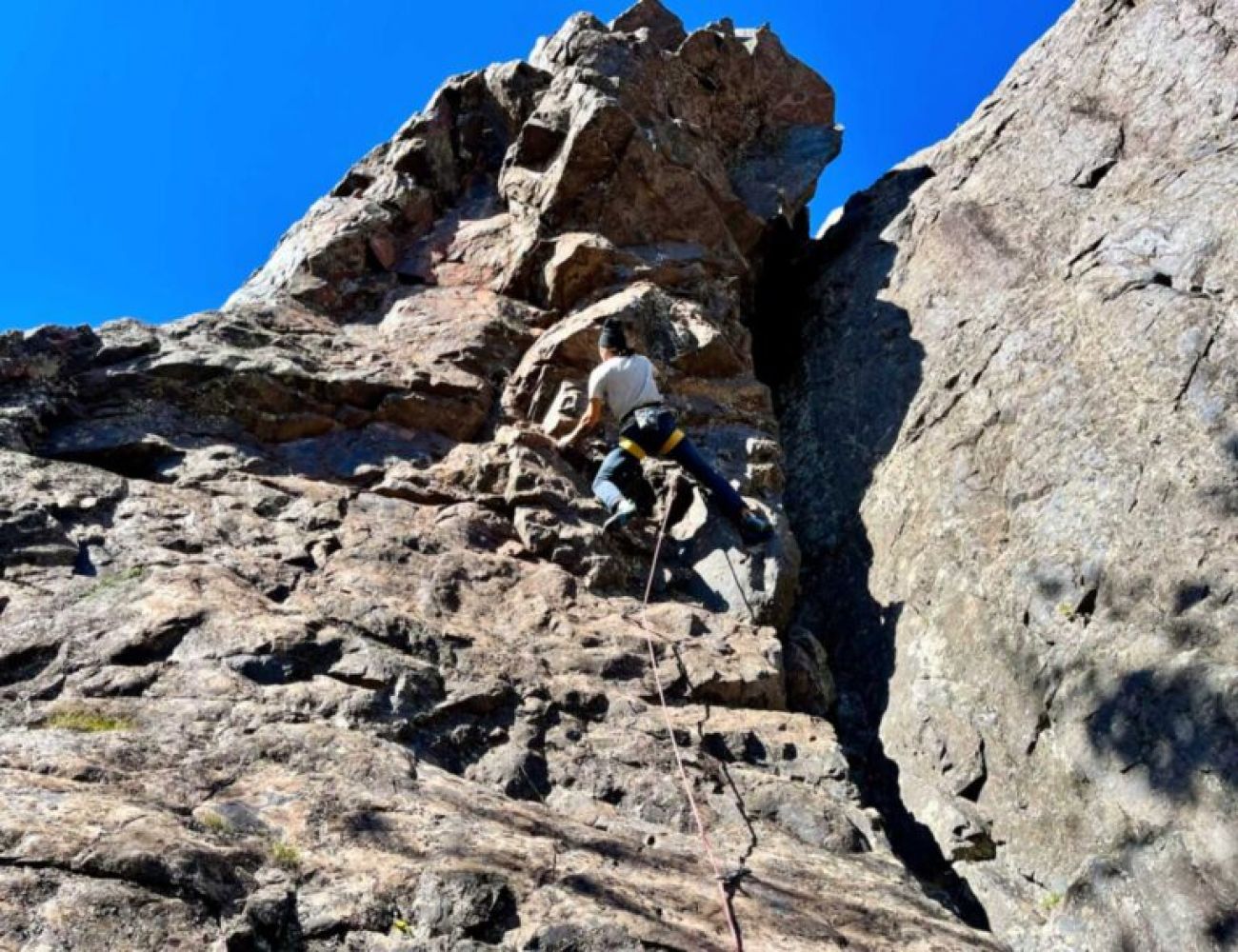
Rock climbing might be a new tool for conserving the public land that bolsters Michigan’s annual $20 billion tourism industry.
The sport is gaining traction as outdoor enthusiasts look to experience nature differently, especially after indoor climbing gyms closed during the pandemic.
Already, there are 7 million climbers in America, and the sport’s popularity is growing.
Related:
- Michigan’s outdoor recreation boom is becoming a business boom
- Study finds lake cleanups help house values recover
- Nonprofit buys 31,000 forested acres by Copper Harbor to keep land public
For the first time, sport climbing appeared in the August 2021 Tokyo Olympics. The word “climbing” peaked in popularity on Google during that event.
“The nature of the outdoors user continues to evolve over time,” said Brad Garmon, the director of Michigan’s Office of Outdoor Recreation Industry.
“We shouldn’t get stuck in certain ways, where certain activities are legitimized and others not. Let’s figure out what people want to be doing in the outdoors and how we can support it,” Garmon said.
Rock climbing isn’t widely recognized in Michigan and the rest of the Midwest because most people don’t expect to find exceptional rock climbing here, Garmon said. That’s one thing that makes rock climbing so exciting: It can reshape how people perceive the state’s outdoor recreation opportunities.
Michigan’s outdoor recreation industry is responsible for 110,000 jobs and $5 billion in wages and salaries annually, according to the agency.
“The outdoors is part of Michigan’s heritage. It’s part of our economy and our communities. We’re an outdoorsy state,” Garmon said.
Just this year, Slugg’s Bluff in the Upper Peninsula became the first climber-owned area in the state.
The popular crag – climbing lingo for a climbable rock face – is about 20 minutes southwest of Marquette.
People have been climbing there since the 1970s, said Bill Thompson, a board member of the Upper Peninsula Climbing Coalition, a nonprofit group protecting sustainable climbing.
The Arbelius family, who had long owned the 10 acres that is Slugg’s Bluff, recognized that climbers maintained the land and donated it to them, Thompson said.
Climbers clean up the trash – anything from broken bottles to fridges – that local nonclimbers toss off the ledge.
Craig Kasmer, a park interpreter at Michigan’s Department of Natural Resources and a former rock climber, said the heightened awareness that climbing demands lends itself to a deeper connection with nature. That means climbers can play a key role in conserving an area.
“Climbers are aware of their surroundings. With, say, a cyclist, it’s exercise. You need to go from point A to point B and you’re passing by trees and you’re not even looking at them.
“The slower the activity, the better. You have to be slow and meticulous when you’re rock climbing. And so you have time to stop and look at things, to be involved with the nature around you.”
As climbers ascend a wall of rock or ice, their focus is on finding the route. They must be extremely present in the search for different holds, whether with their hands exploring the rock or an ice tool testing the ice.
It’s this awareness and connection to nature that has led organizers of the popular Michigan Ice Fest to set a goal of net zero emissions over the next three years.
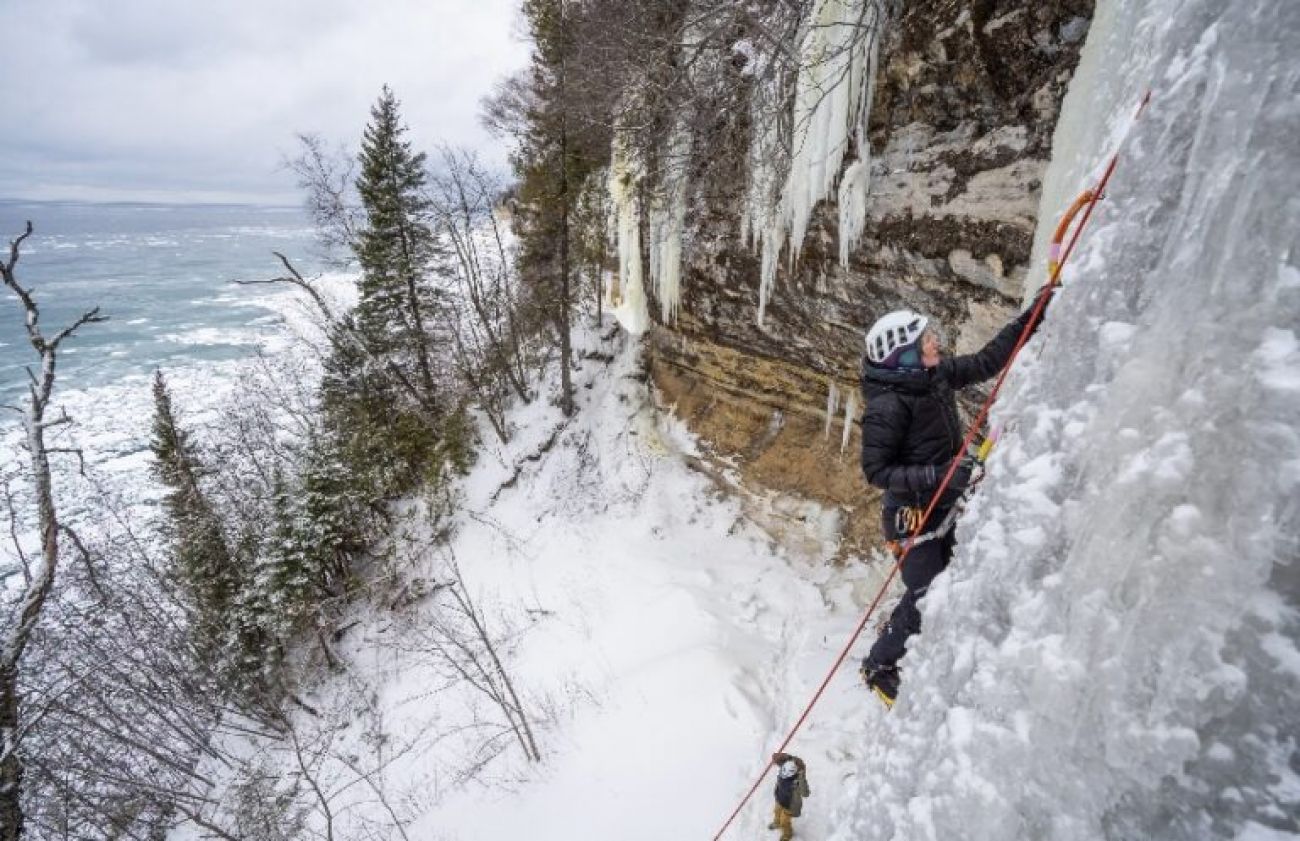
The event is held in Munising and initially had 10 climbers in 1991. Now, it attracts over 1,000 people from around the world.
“Our passion relies on consistently cold weather, and that’s being threatened by climate change,“ said Matt Abbotts, a co-organizer of the Ice Fest. “If winters are milder or shorter, that means less ice climbing.”
The festival takes place an hour east of Slugg’s Bluff, and ice climbers of all levels have come for the past 30 years to climb on the banks of Lake Superior.
“Climbers might not be the biggest community, but it’s a group of strong-willed, passionate individuals who are never afraid of doing the hard work,” Abbotts said.
The Upper Peninsula has the most climbing opportunities in Michigan, with over 300 documented roped routes and a myriad of boulder problems – unroped climbing at lower heights. But the Lower Peninsula is home to some crags, too.
In Grand Ledge, about 10 miles outside of Lansing, climbers try to protect one of the only crags in the Lower Peninsula. The part of the park that allows climbing – Oak Park – is city-owned, and officials aren’t good about managing the area, said Ben Poulson, a Grand Ledge climber.
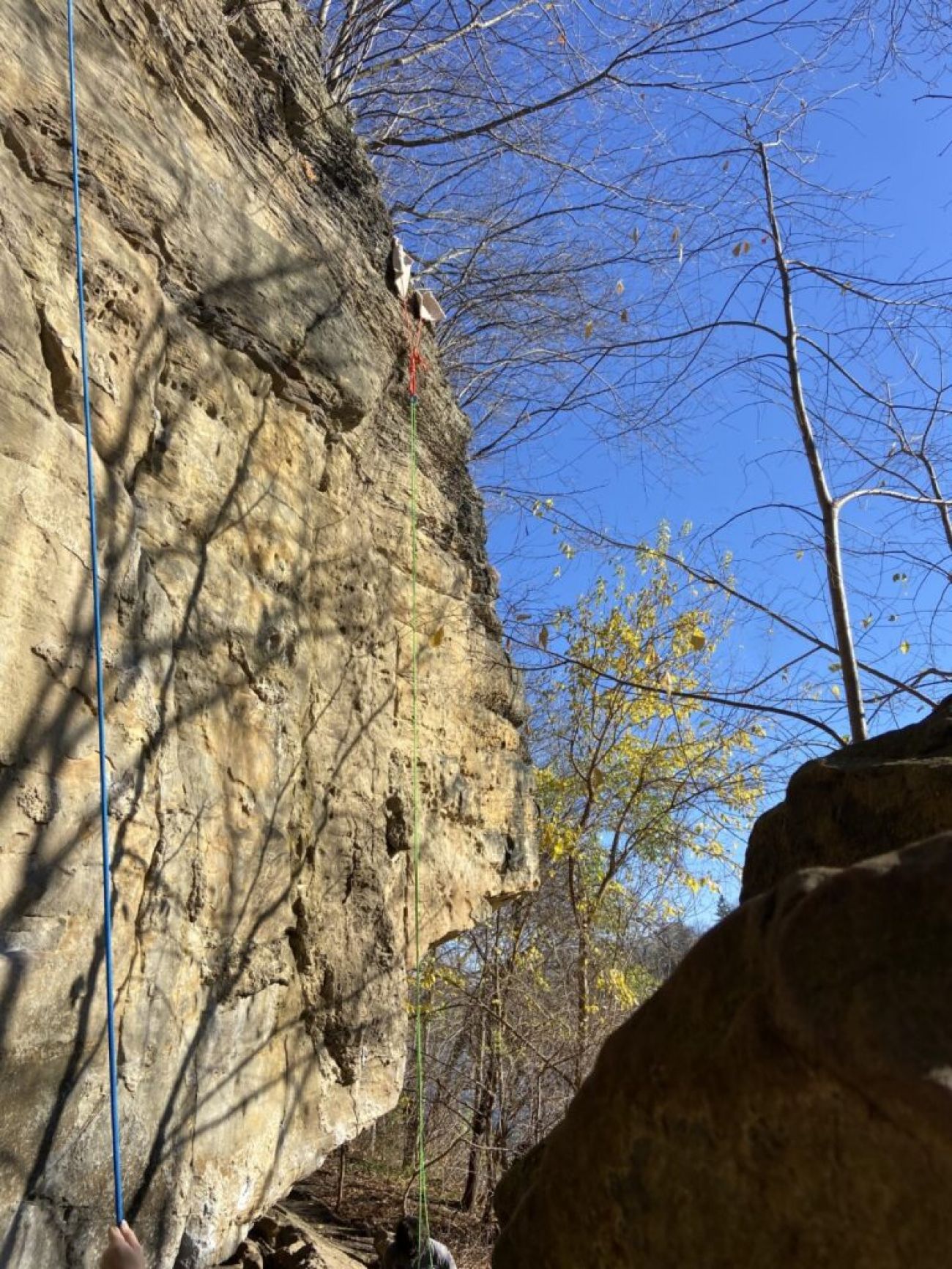
There are competing demands for public dollars, so city management at the ledges has fallen onto the back burner, said Bruce Bright, a member of the Grand Ledge Parks & Recreation Commission.
“In some respects, I would characterize the management of Oak Park as being one of benign neglect,” Bright said.
So, who maintains it?
Climbers.
“Climbers are the best stewards,” Poulson said. “If you ban climbing, you’re banning the best environmental stewards from that area.
“If you allow climbing, you’re allowing people who very much care about that area to be there and to police it,” he said.
Bright said members of the climbing community put down wood chips and topsoil and even installed makeshift wooden rails to prevent erosion.
People who spend time outdoors feel a shared responsibility to protect it. That’s why it’s so important to get people outside, said Chris Winter, the executive director of the Access Fund, a land trust protecting and preserving climbing crags across America and based in Boulder, Colorado.
“When you connect to the larger landscape, you start really caring about conservation and stewardship,” Winter said.
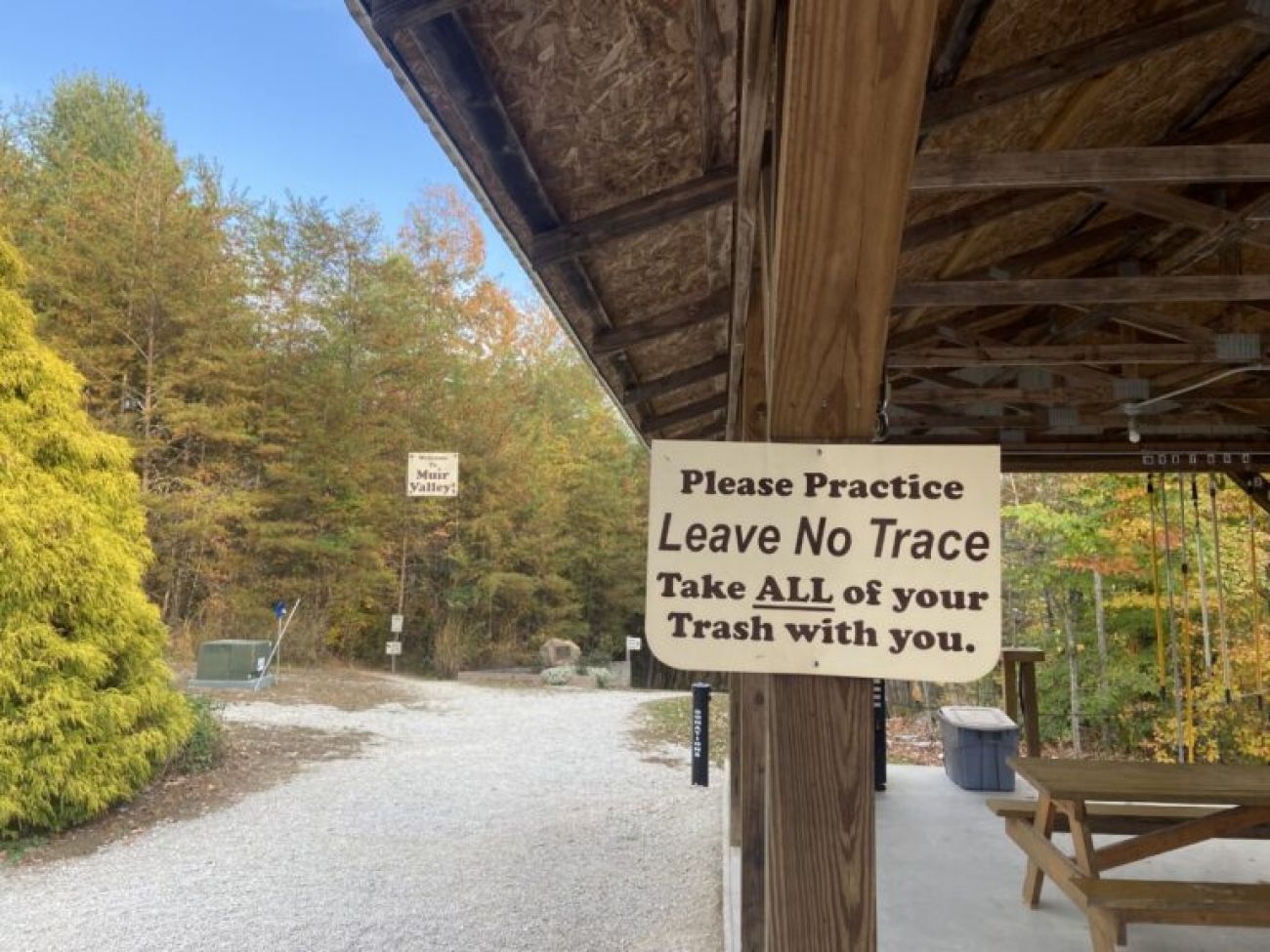
Still, some landowners with crags on their property resist climbing.
A section in Michigan’s Natural Resources and Environmental Protection Act protects landowners from liability for those injured on their land if they were there without paying and for recreational purposes. It mentions activities like hiking, hunting, fishing and camping but groups remaining outdoor activities as “any other outdoor recreational use.”
The vague language fails to mention rock climbing, thus raising questions of liability.
The climbing coalition’s Thompson said rock climbing is often perceived as dangerous.
But it’s one of the few activities that has never seen injury or death in Presque Isle, one of Marquette’s most visited parks. Other allowed activities – scuba diving, kayaking, hiking, mountain biking – all had injuries and deaths at the park, Thompson said.
Even Devil’s Lake State Park in Baraboo, Wisconsin, which has what some climbers consider the best climbing in the Midwest, isn’t maintained for climbing.
It has over 1,600 climbing routes and 1,500 boulder problems detailed in numerous guidebooks.
Despite that kind of exposure, officials neither permit nor punish climbing in the park.
Climbers maintain the crags there, too.
The local Wisconsin Climbers Association partners with the Access Fund to ensure access to climbing spaces. They keep the crags free of graffiti and trash, in addition to implementing erosion control.
In Michigan, the Grand Ledge Climbers Coalition and the Upper Peninsula Climbing Coalition both partner with the Access Fund to conserve local climbing crags.
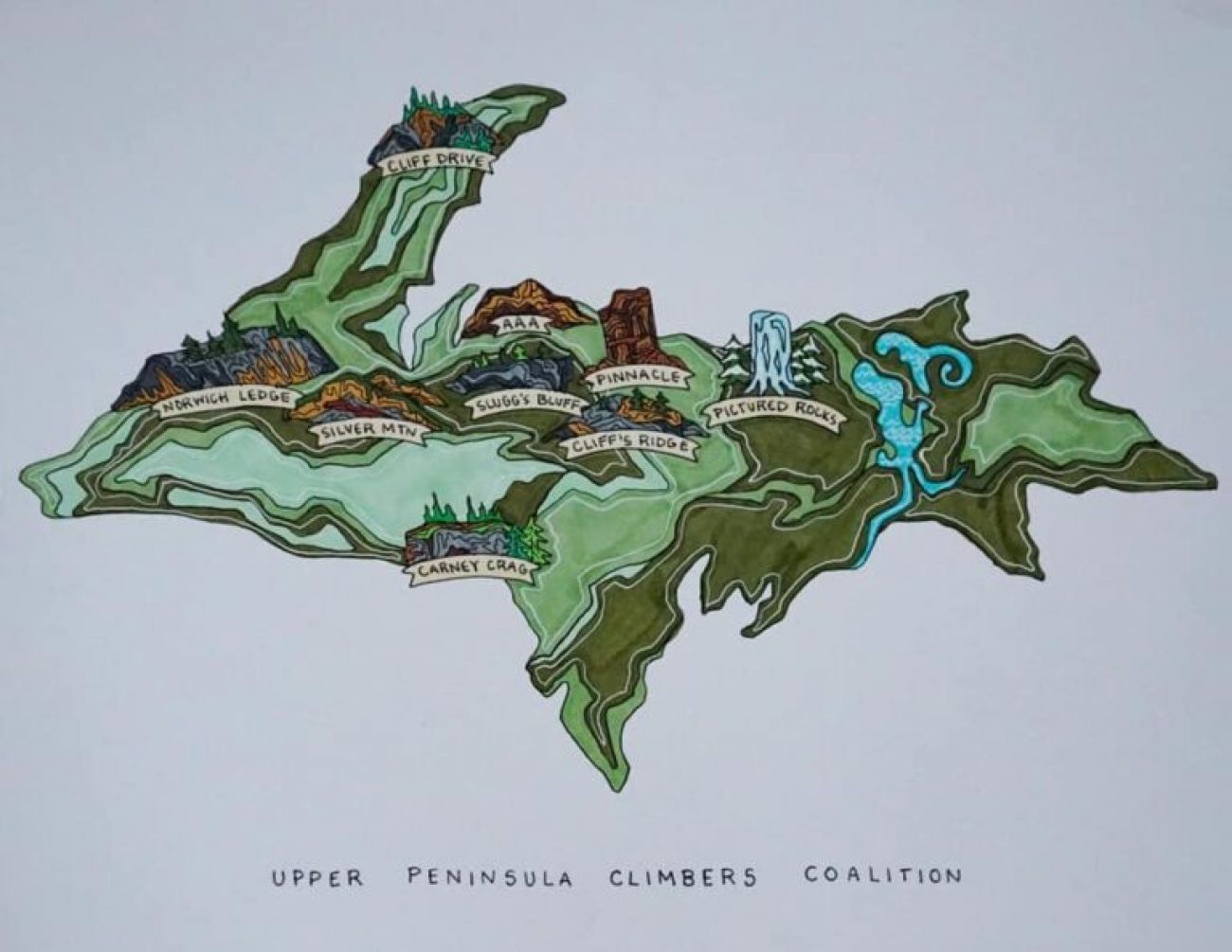
The Access Fund’s Winter said, “It’s not only the specific places we like to spend time as climbers, but also the larger landscapes around those places. It’s those larger landscapes that are so inspiring.”
Like any outdoor activity, climbing can adversely impact an area. But instead of banning an activity, we ought to bolster management efforts to accommodate it, Bright said. After all, resources have long been exploited in the name of economic development.
“Sometimes I think people are overly critical of our visitors. If the rock is damaged by overuse, is that really such a crime compared to what’s taken place over the last 100 years?” Bright said.
Winter said that climbers have always played an integral role in protecting the lands that all people – climbers and non-climbers – love and enjoy.
“As we look to the future, in the bigger picture of conservation, we have to be tackling these big environmental challenges of our time,” Winter said.
“We have to do that both to protect outdoor climbing but also to protect the environment more broadly.”
Reporter Cameryn Cass has climbed at Grand Ledge in Michigan, Devil’s Lake State Park in Wisconsin and the Red River Gorge in Kentucky.
Michigan Environment Watch
Michigan Environment Watch examines how public policy, industry, and other factors interact with the state’s trove of natural resources.
- See full coverage
- Subscribe
- Share tips and questions with Bridge environment reporter Kelly House
Michigan Environment Watch is made possible by generous financial support from:
Our generous Environment Watch underwriters encourage Bridge Michigan readers to also support civic journalism by becoming Bridge members. Please consider joining today.
See what new members are saying about why they donated to Bridge Michigan:
- “In order for this information to be accurate and unbiased it must be underwritten by its readers, not by special interests.” - Larry S.
- “Not many other media sources report on the topics Bridge does.” - Susan B.
- “Your journalism is outstanding and rare these days.” - Mark S.
If you want to ensure the future of nonpartisan, nonprofit Michigan journalism, please become a member today. You, too, will be asked why you donated and maybe we'll feature your quote next time!






